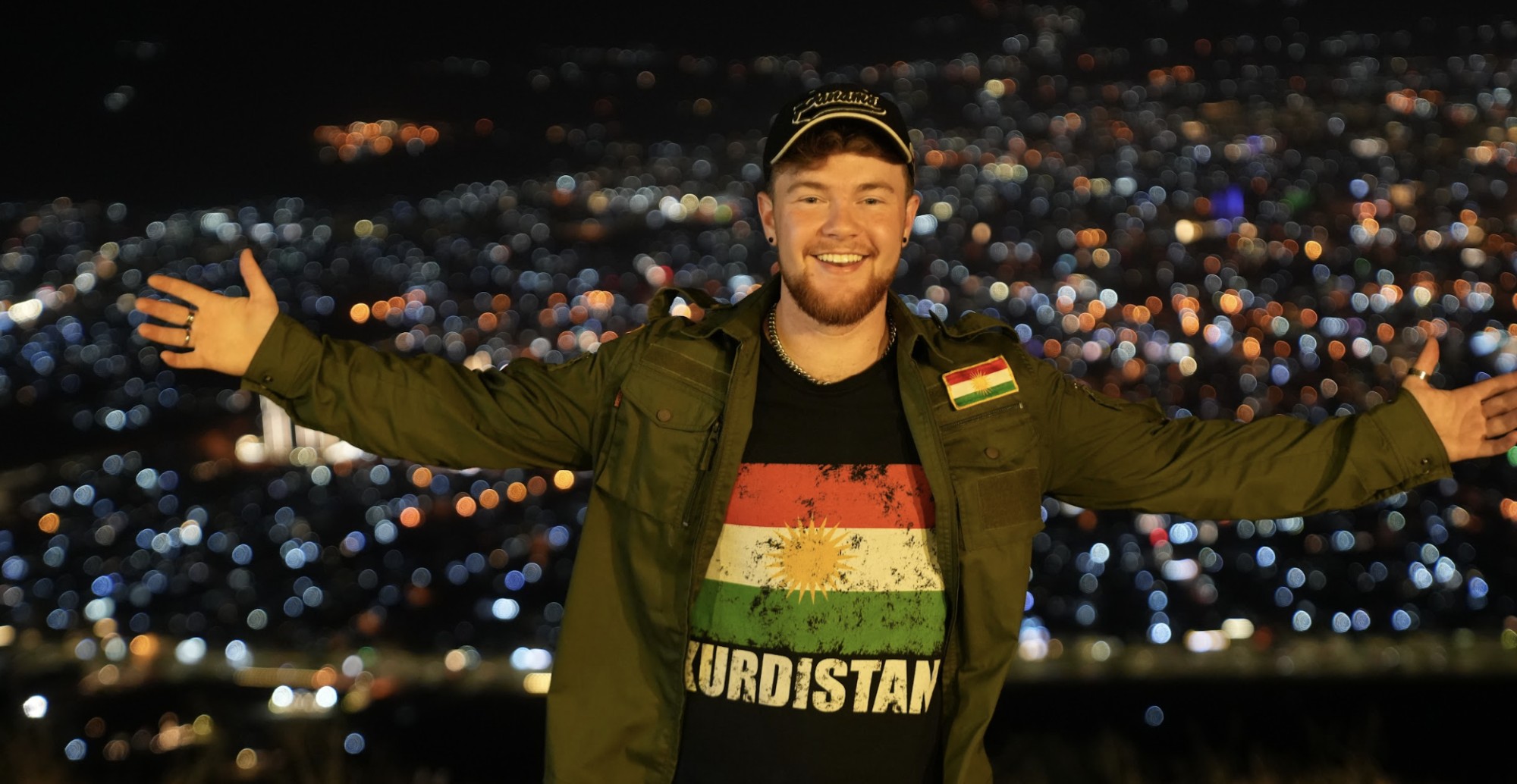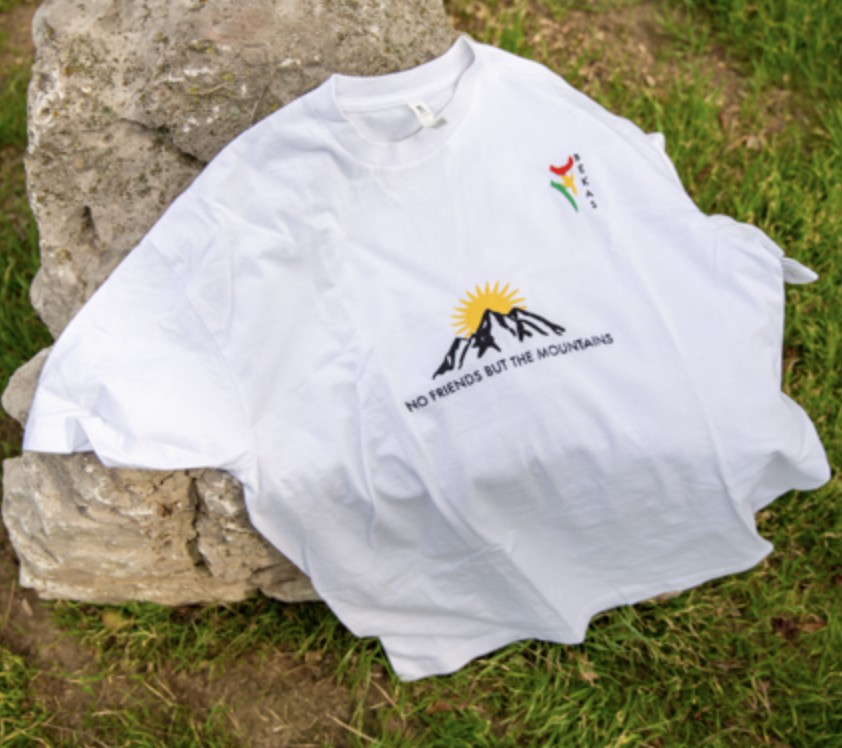The oriental rug manifests the social structures and manufacturing traditions of various cultures, shaped by the historical context of the Middle East and Central Asia. Prior to the 1970s, Western studies focused mainly on urban-knotted pile rugs, neglecting rural flatweaves. Since then, flatweaves have grown in popularity, attracting increased scholarly attention.
Kurdish floor textiles received catalog treatment for the first time in 1983 in Discoveries From Kurdish Looms by R. D. Biggs, shedding light on hitherto obscure categories like Iraqi Kurdish and Khorasani weavings. U.S. diplomat and textile expert William L. Eagleton argues that Kurdish rugs, particularly bijar and Senneh gelim, were undervalued due to merchants’ reluctance to label them as Kurdish, affecting their market value. Plainly said, as a stateless nomadic people, the Kurds were seen as makers of inferior products by uneducated consumers.
According to Eagleton, the gradual weakening of the tribal structures of Kurds in Turkey made tribal geographic characteristics less relevant in studying Kurdish weaving. Nevertheless, Kurdish rugs have distinct characteristics, such as color-banded borders, thick braided warp ends, and specific regional palettes and patterns. Some weavings have unique names like “wedding shoes,” which features S-shaped motifs, and “divorce your wife,” reflecting their cultural symbolism.
“The horizontal bands of sideways S-shaped motifs are called ‘wedding shoes’ because such gelims are given by the girl’s parents to the wedding couple … A weft-warp (jajim) flatweave of the Jalali tribe near the Iranian border is called ‘divorce your wife’ because failure with this difficult technique is said to be grounds for divorce,” Eagleton explained in his 1988 book Introduction to Kurdish Rugs.
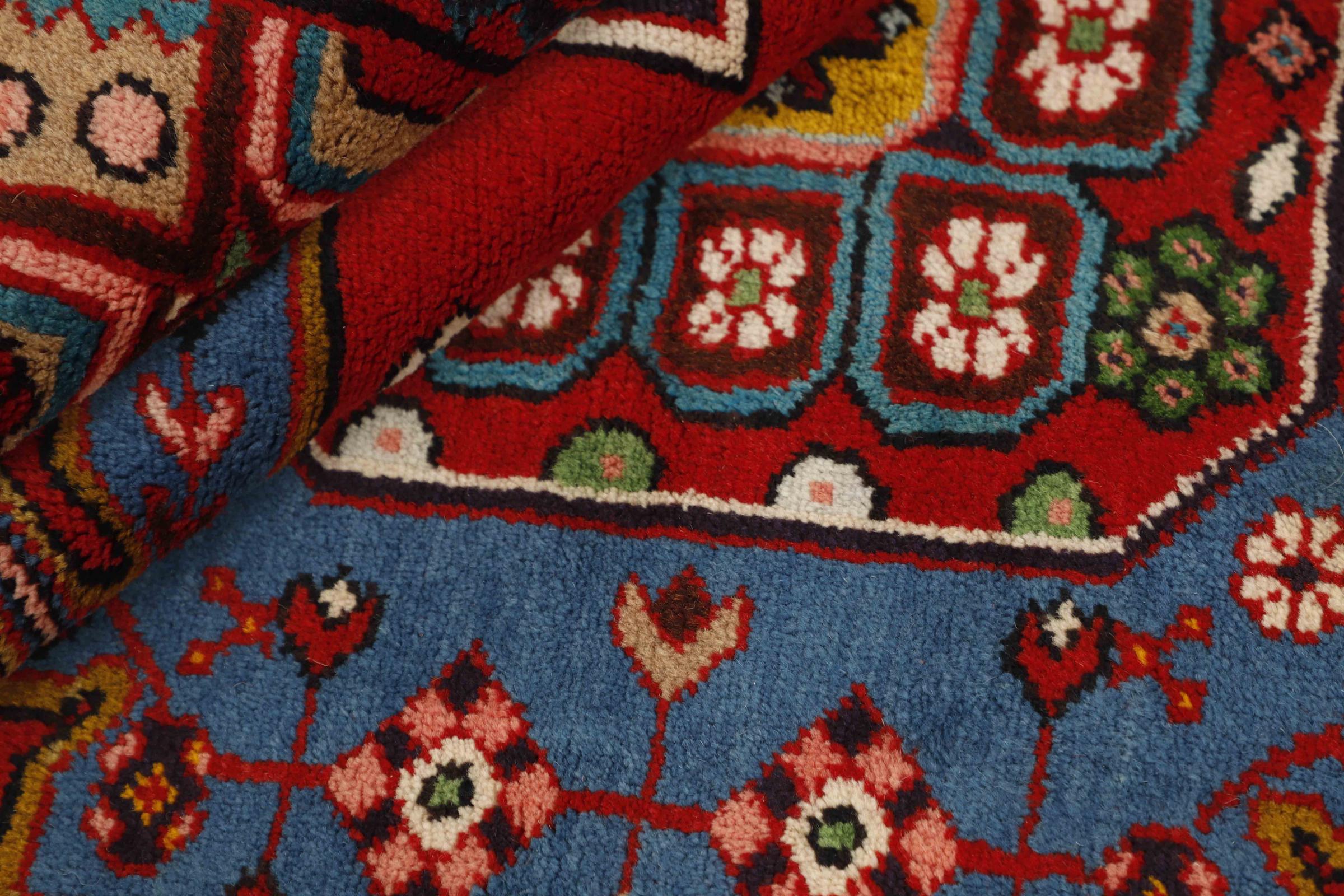
State of the art
Weaving design is shaped by the interaction of structure, technique, and pattern. Colors blend with three-dimensional structures and weaving techniques to create the two-dimensional designs and patterns that distinguish textile arts. Knot density, influenced by factors like the number of ground wefts between knot rows and whether they are symmetrical (from eastern Turkey) or asymmetrical (Senneh) from eastern Iran, for example, also plays a crucial role. Weavers manipulate the yarn to integrate patterns into the fabric’s structure, which is especially evident in flatweaves like slit and dovetailed tapestries, as well as in counted-thread embroidery.
Tribal geographic signifiers of Kurdish textiles
Three majority-Kurdish regions in Turkey share similar weaving traditions: the far east south of Lake Van, the far east north of Lake Van, and all districts west of Lake Van.
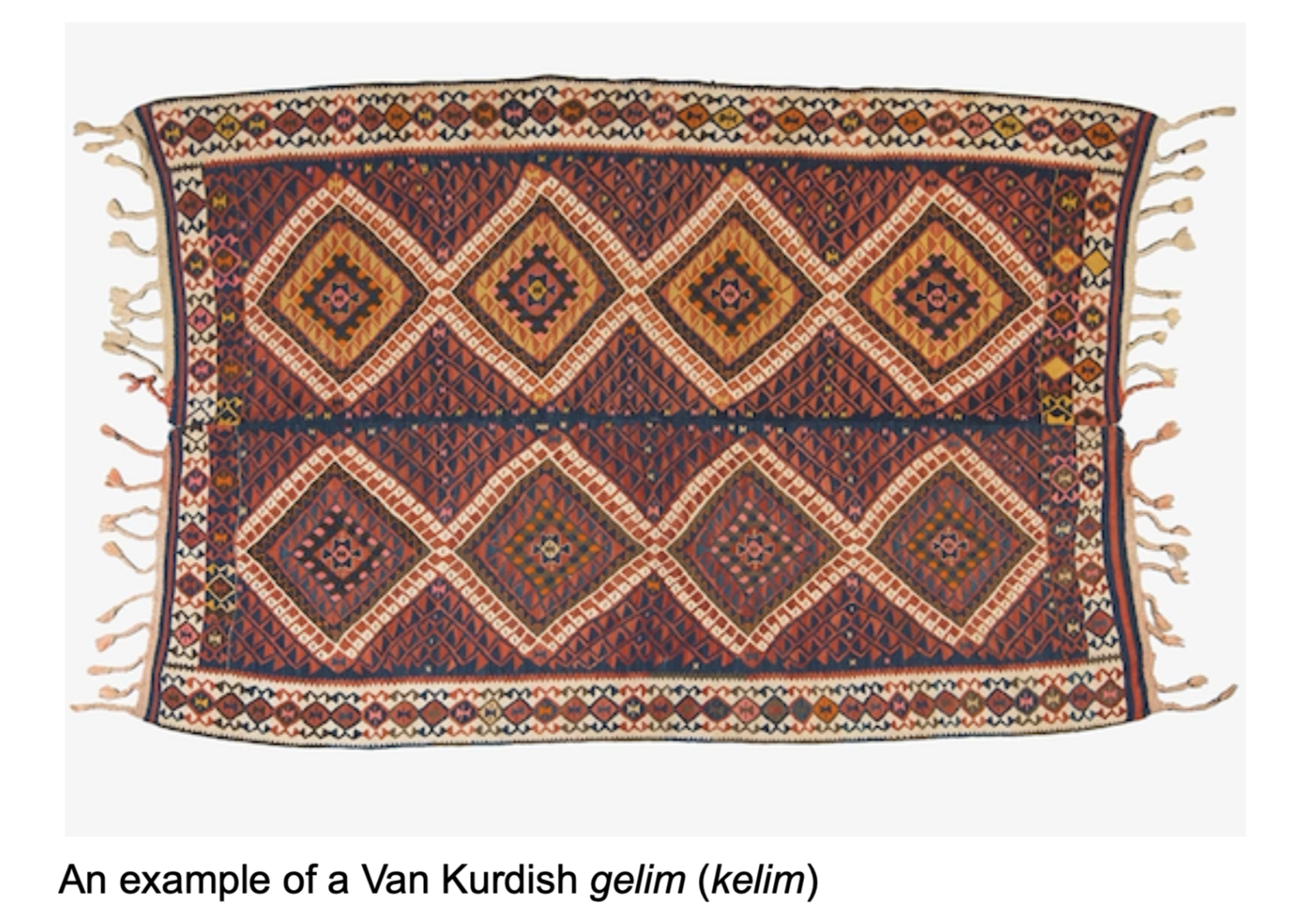
In Iraq, traditional rugs or glims were produced in three main locations: the Erbil plain, whose weaving tradition was influenced by Iranian Kurdish designs such as Senneh gemil in the 18th century; the northeastern Erbil area, where the Herki, Surchi, and Keylani tribes weave rugs; and the northern area of Mosul, famous for its gelims.

Meanwhile, in the northern mountains of Caucasia, Khorasani or Kurmanji Kurds have been prominent warriors for centuries. The majority were settled there by the Safavid kings to act as cannon fodder: human shields against Uzbek invaders. Nonetheless, historical references in the Persian administrative archives indicate that Kurds were present in Khorasan’s mountains before the Safavid period.
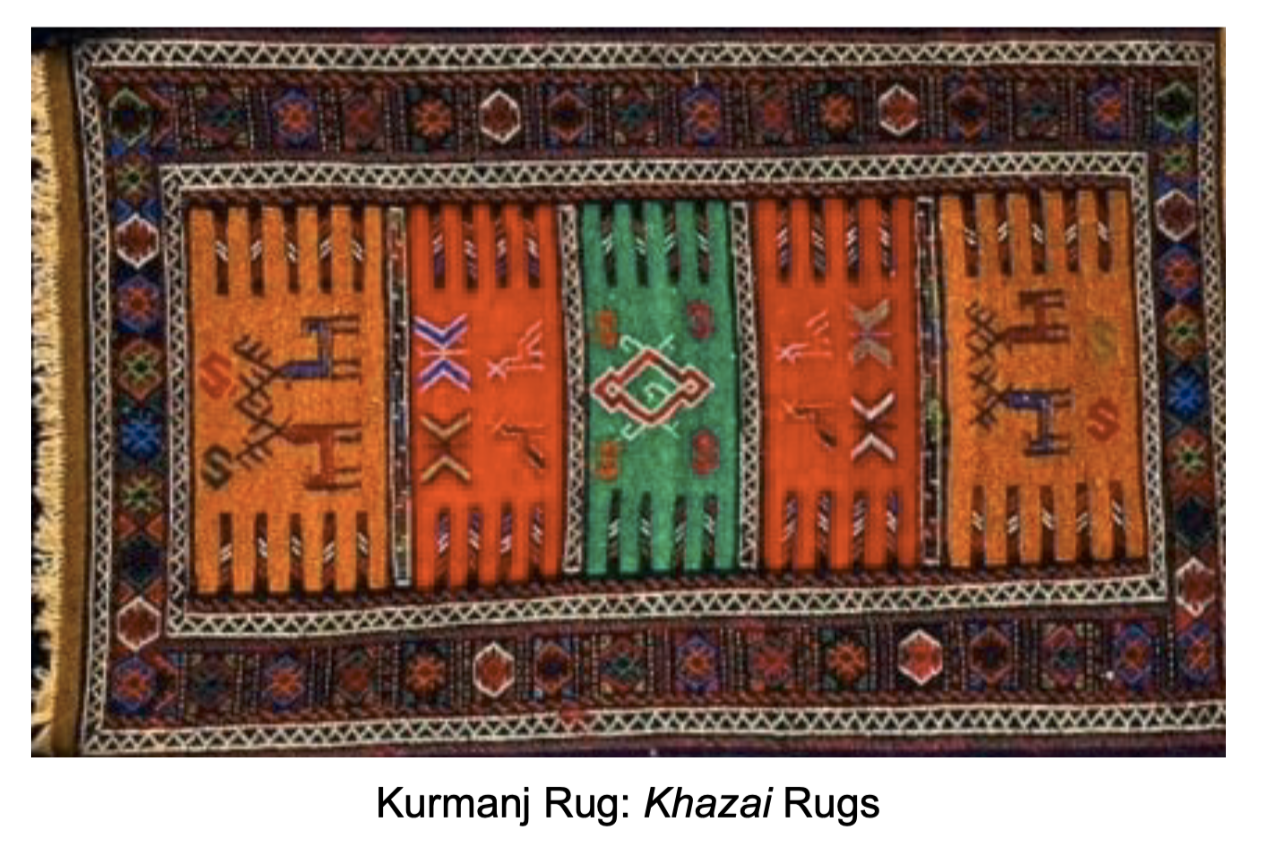
Senneh gelim: urbanization and commercialization of nomadic gelims
Senneh gelim, also known as sojaee, emerged in the 18th century in Sanandaj, Eastern Kurdistan (northwestern Iran), blending Safavid urban carpet industries with preceding Kurdish tribal weaving traditions. These gelims, characterized by intricate designs and high-quality materials like wool, silk, and cotton, competed with Safavid silk gelims in artistry. The tradition flourished under the Ardalan Kurdish principality (1169-1867), which controlled trade routes linked to the Silk Road through Kermanshah, with Sanandaj as their capital.
Despite the rapid commercialization of knotted pile carpets under the newly introduced European capitalist mode of production in the late 19th century, Senneh gelim production remained relatively untouched due to the lesser value attributed to flatweaves. Ultimately, Senneh gelim gained traction in the 1970s with the Western demand for traditional textiles, subsidized by the Pahlavi governments’ initiatives (1941-1979) to revive cultural diversity. Today, it continues as a cottage industry and source of income for Kurdish women in Sanandaj and other parts of Iran’s Kurdistan Province.
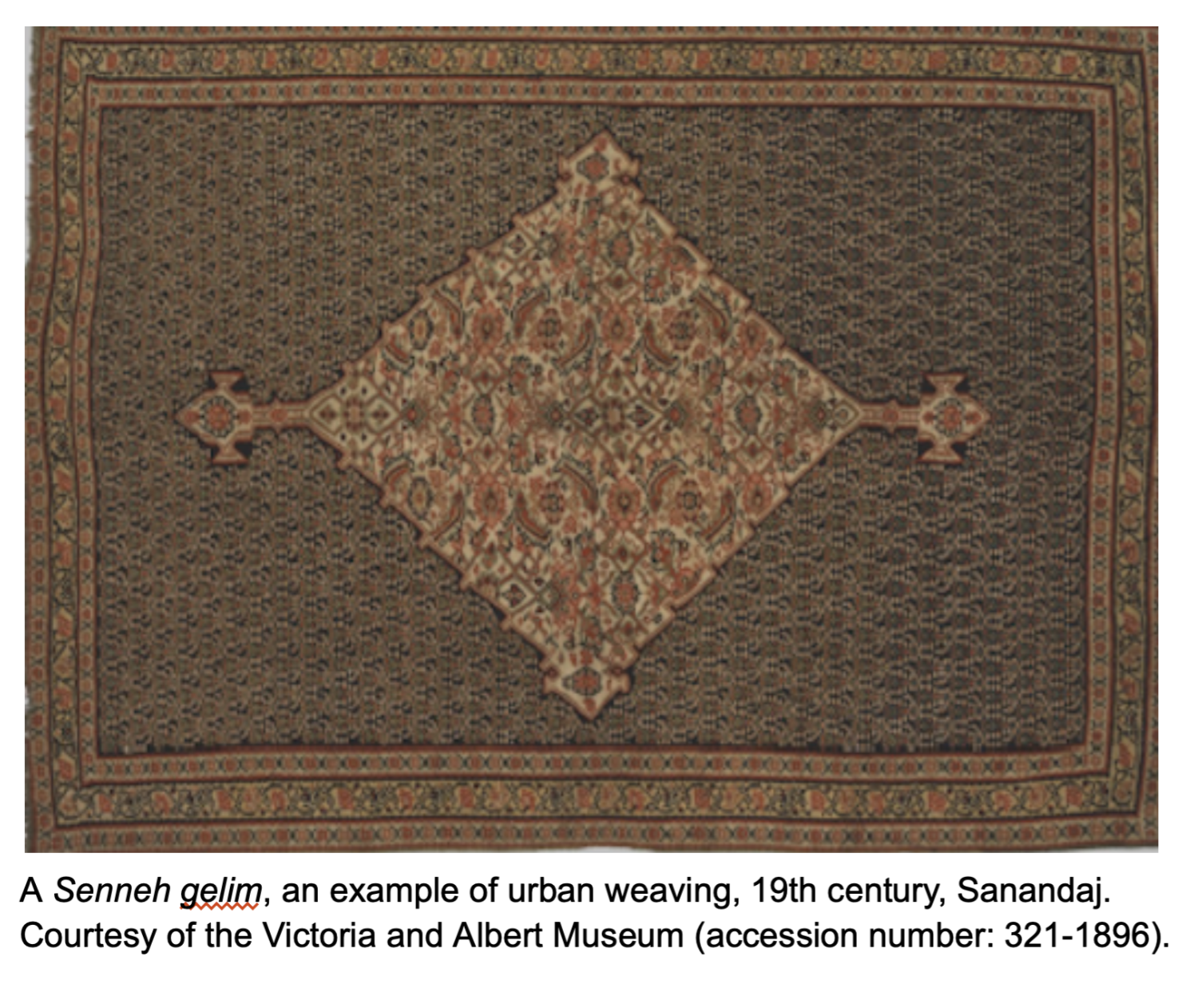
Techniques and characteristics
Senneh gelims, distinguished by their tiny repeating patterns, stand out from other Middle Eastern flatweaves for their curvilinear designs and slit tapestry weave. Unlike nomadic flatweaves, which boast geometric patterns, senneh gelims reflect the urban artistic traditions of commercially woven textiles. Traditionally, wool was used for both warp and weft, though contemporary production sometimes blends in cotton to the rugs. Weaving techniques involve memorization and imagination (hefzi-baaf and zehni-baaf) rather than solely relying on visual guides like swatches, with patterns borrowed from traditional pile carpets and other flatweave designs.
Popular patterns, such as herati (the fish), gol-o-goldān (flower and vase), kochke-kolo, and qol-e-chāi were influenced by Safavid and Qajar designs, while others reflect Kurdish geohistorical contexts, like the qafqāzi (Caucasian) design and the Moses snakeheads motif, the latter of which hints at Judaism’s ancient presence in Kurdish regions. Many artisans in Sanandaj recall their mothers and grandmothers making pile carpets and other indigenous flatweaves such as mowj, barr, and jajim.

Snakes and women: Kurdish gelims’ omnipresent motifs
The earliest-known rugs from the Caucasus are referred to as dragon rugs, which date to the time when the Safavid Empire expanded northwest into southern regions of the Caucasus. During the late 16th century, Shah Abbas I (1588-1629) actively promoted economic growth across his empire by incorporating the flatweave into the formal economy. However, the presence of the dragon motif in the region predates the arrival of the Safavids by almost five centuries. For instance, similar designs appear in rugs associated with the Kurdish tribes of the region of Karabakh, while flowered motifs are more common in rugs from regions in the eastern Caucasus like Shirvan and Dagestan.
It is worth noting that the oldest Kurdish legend of the slaying of a dragon is documented in the Zoroastrian holy book of Avesta (1500-600 BC), where the heroic deeds of Garshasp, known as the dragon slayer, are recounted. Shahmaran, the Queen of Snakes, is a mythical creature in Kurdish folklore depicted as part-woman, part-snake. The Kurds consider the serpent a symbol of luck, abundance, strength, and immortality, often decorating their walls, chests, and textiles with motifs of Shahmaran, a practice especially prevalent among Yezidi communities. The S-shaped or snake (dragon) motifs, in particular, can be observed on traditional flatweaves in households and public places across Kurdish-populated areas of Iran and Iraq.
When it comes to range, Kurdish weavers – predominantly women – draw inspiration from their surroundings, translating natural shapes into abstract and geometric design elements and showcasing their creativity and spontaneity. Traditional Kurdish weavings feature vivid, vibrant colors, mainly red and blue, with weavers occasionally incorporating pinks and oranges to form mesmerizing optical illusions. Kurmanj women in Khorasan, renowned for their colorful attire, infuse their hand-woven pieces with vivid shades. They typically avoid loom drawings, instead following patterns from existing pieces – in the same spirit as graffiti artists – reflecting the weavers’ emotional states at the time. Such levels of dexterity and fluidity are missing in the traditional textiles of the surrounding cultures.

A future for flatweaves
Due to the adverse effects of globalization such as economy of scales, comparative disadvantage, and stagnating purchasing power, more competitive products from Iran and Turkey began to undermine the production of flatweaves in the Kurdistan Region in the 20th century. However, thanks to the Ninth Cabinet’s objective of diversifying the economy through supporting local production, the weaving tradition in the Kurdistan Region is resurging in parallel with the increasing demand from the growing tourism sector and the growth of the local middle class who prefer authentic handmade weaves over industrially manufactured products.
Historically, Kurdish textiles have exhibited considerable diversity due to the fragmented nature of Kurdish society, comprising numerous autonomous clans and tribes. Limited communication, lack of statehood, and tribal rivalries further contributed to diverse artistic traditions and cultural practices among Kurdish weavers.

Despite this diversity, Kurdish flatweaves shared commonalities such as weaving techniques, social dimensions, and economic functions, setting them apart from other cultural and linguistic groups such as Arabs, Qashqais, Shahsevans, and Turks.
From an eco-social perspective, many variegated designs may have Kurdish origins. Nomadic communities, particularly Kurds, often had access to extended terrains, allowing them to gather a variety of herbs and plants that provided them with a wider range of pigments for colorization. In terms of practicality, flatweaves are more durable, portable, and less prone to absorbing dirt compared to knotted pile carpets.
Today, Kurdish gelims remain predominant in both production and consumption among tribal and non-tribal peoples due to their compatibility with the nomadic lifestyle.
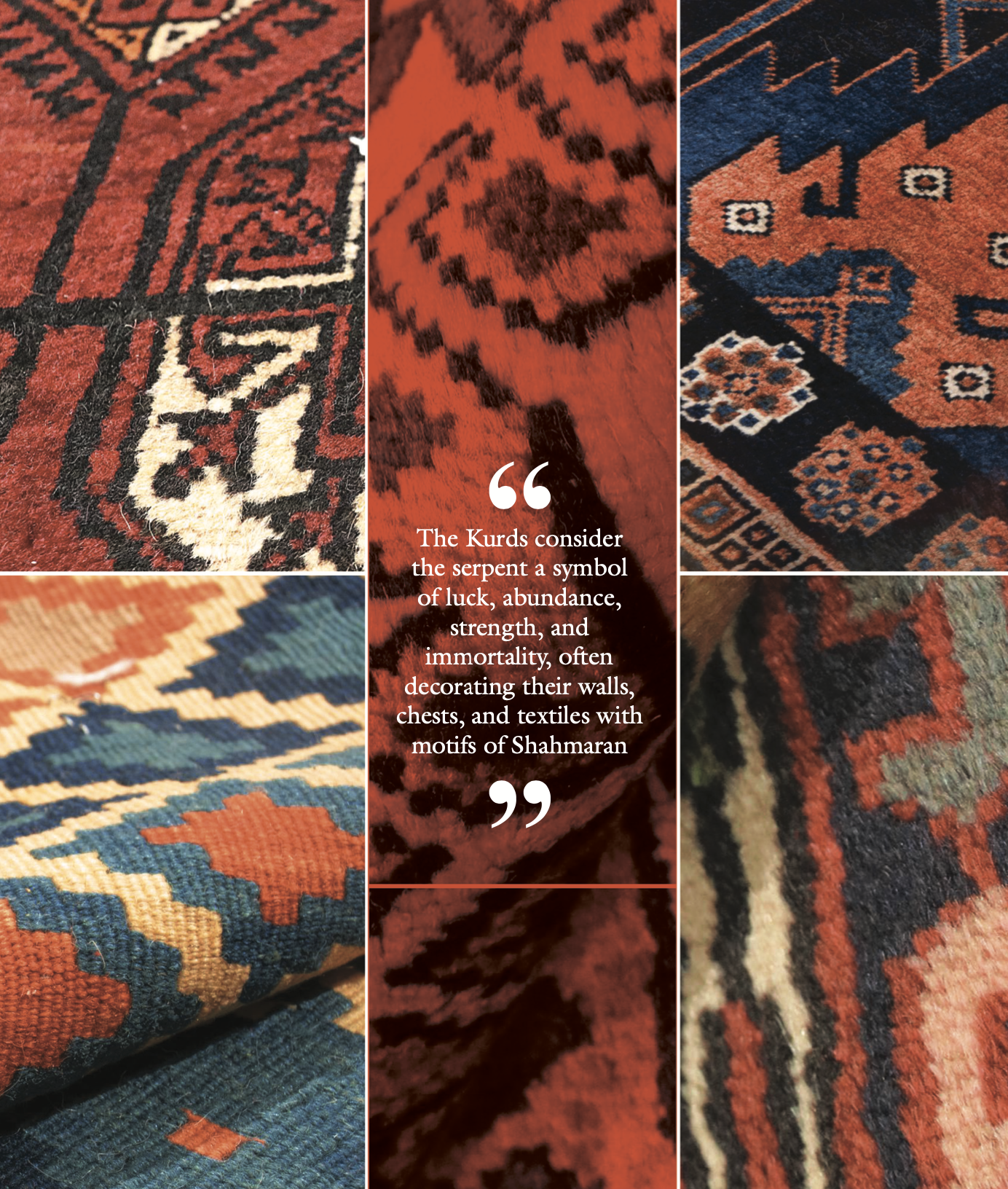
References
Gibson, M. (1992). “Review of *An Introduction to Kurdish Rugs and Other Weavings*; *Kordi: Lives, Rugs, Flatweaves of the Kurds in Khorasan,* by W. Eagleton & Wilfried Stanzer.” *Iranian Studies, 25*(1/2), 151–154.
Gunter, M. M. (1989). “Review of *An Introduction to Kurdish Rugs and Other Weavings,* by W. Eagleton.” *Turkish Studies Association Bulletin, 13*(2), 115–117.
Ghareb, Ako. (2024, March 10). Online interview.
- Title: General Director, National Museum of Amnasuraka.
- Additional role: Writer of “Kurdish Rug.”
Ghareb, Kobin. (2024, March 10). Online interview.
- Title: Designer and Archivist, National Museum of Amnasuraka.
Mirabootalebi, R. (2021). *Senneh Gelim and Gelim Weavers: An Interdisciplinary Study of the Contemporary Production of a Traditional Kurdish Carpet in Iranian Kurdistan.* Doctoral dissertation, University of Delaware.
Mirabootalebi, R. (2021). *Kurdish Flatweaves and Weavers: Cultural Interweaving and Unraveling.* Doctoral dissertation, University of Delaware.
Nicolaus, Peter. (2011). “The Serpent Symbolism in the Yezidi Religious Tradition and the Snake in Yerevan.” *Iran & the Caucasus, 15*(1/2), 59.
Said, Q. (2019). “Rugs and Gelim in Iraqi Kurdistan.” *The Encyclopedia of Crafts in WCC Asia Pacific Region ECAPR.*
Deniz, Dilşa. (2021). “The Shaymaran: Philosophy, Resistance, and the Defeat of the Lost Goddess of Kurdistan.” *The Pomegranate, 22*(2), 233–236.
Baran, Suat. (2020). “From Fairytale Character to Lost Goddess: The Archetypal Representation of Stepmother within Kurdish Folklore.” In Korangy, Alireza (Ed.), *Kurdish Art and Identity: Verbal Art, Self-definition and Recent History* (p. 92). Berlin, Boston: De Gruyter.
*Khazai Rugs*. (2023). “Kormanj Rugs Are the Kurdish People’s History, Knotted by Hand.”
